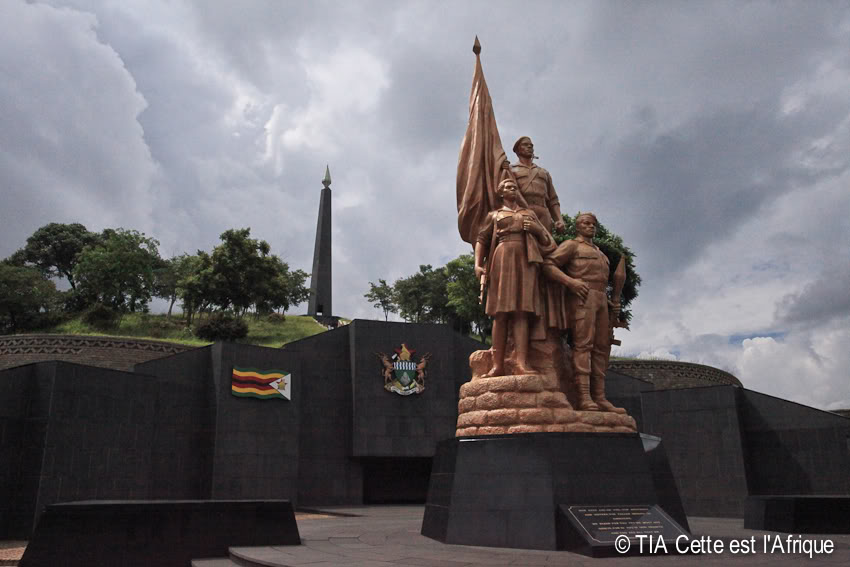
The Sunday Mail


The skulls of several First Chimurenga heroes, which were shipped to British museums during early colonial years, will soon be repatriated to Zimbabwe
The skulls of several First Chimurenga heroes, which were shipped to British museums during early colonial years, will soon be repatriated to Zimbabwe after Government successfully negotiated with authorities in London.
It is believed that among the skulls are those of Chief Mashayamombe Chinengundu of Mhondoro and Chief Makoni Chingaira of Rusape.
Both chiefs were beheaded by British invasion forces at the height of Zimbabwe’s first war of resistance against white settlers (1896/7), and their heads were shipped abroad in exchange for hefty sums.
Experts are working to identify the owners of all the skulls whose repatriation is being led by the National Museums and Monuments of Zimbabwe.
Though work is still underway, some researchers believe other heroes like Mbuya Nehanda and Sekuru Kaguvi were hanged and their heads also taken oversees.
NMMZ director Dr Godfrey Mahachi told The Sunday Mail last week that several skulls are at a London museum and have been positively identified as having originated from Zimbabwe.
He, however, refused to divulge the museum’s name.
“Through the efforts of our Government and their linkages with British authorities, we have established there are some human remains of Zimbabwean origin, which are in British museum institutions. We can confirm some of these remains got to London around 1898, which was around the time the First Chimurenga was coming to an end.
“So, we can make a connection between the beheadings and the arrival of the remains in Britain. We have the obligation, as a country, to retrieve those remains because they belong to us. The transfer is, however, not a simple museum-to-museum arrangement.
“It requires a lot of research and verification, and only when all this is done can we know who the skulls belong to. Clearly, we might also need to use new scientific technologies such as DNA testing that allows us to positively identify them. But we are at the preliminary stage of repatriating them home.”
On September 13, 1890, the Pioneer Column – a force assembled by British businessman Cecil John Rhodes and his British South Africa Company – hoisted the Union Jack flag in Harare, Zimbabwe’s capital city today.
This marked the colonisation of that territory with the backing of a Royal Charter from Britain’s Queen Victoria.
In 1896/97, the indigenous people in Matabeleland and Mashonaland staged an uprising against the BSAC administration to take back their land and restore their rights.
British invasion forces, who boasted superior weaponry, publicly beheaded “troublesome” resistance movement leaders partly to intimidate fellow blacks.
The decapitated bodies were then showcased as trophies, with the forces collecting hefty sums from colonial authorities who, in turn, displayed them in museums.
Chief Mashayamombe was one of the leading figures of this war, causing many problems for whites in Mhondoro, Norton and Chegutu.
Historians say he was a military strategist who, on occasions, defeated those sent to fight him.
He was responsible for killing a white settler called Norton – after whom Norton Town, near Harare was named.
After several defeats at his hands, the settlers dispatched a reinforcement team, which used dynamite to blow him and his people out of their hideouts.
Using early craftsmanship, Chief Mashayamombe had constructed an intricate network of tunnels in caves where he and his people hid and kept supplies during raids by the colonialists.
The reinforcement force captured him in this dynamite attack and later beheaded him.
A ransom was paid for his head.
Dr Mahachi said, “There was also an issue among the whites that anyone who presented the head of the ‘most troublesome’ local fighters would be given a monetary reward.
“The only way to confirm a kill to the authorities was to present the head in exchange for the reward.”
Chief Makoni Chingaira was also among the First Chimurenga heroes as he led resistance in the Rusape area where he ultimately met his death.
Sekuru Kaguvi, also known as Gumboreshumba, was an influential political and religious leader who mainly operated in the Goromonzi area.
He led the resistance crusade and was believed to be the spirit husband of another great Shona spirit, Mbuya Nehanda with whom he worked closely to mobilise the masses.
Both were hanged by the BSAC in the then Salisbury (now Harare) in 1898 on charges of banditry and rebellion.
“Records indicate he was beheaded and his head taken away. There are numerous other accounts of similar beheadings. For instance, Mapondera, who fought up to 1904, is believed to have also been beheaded.
“There are people who believe that Mbuya Nehanda and Sekuru Kaguvi were beheaded and their heads taken away as well.”
In 2011, the Namibian government carried out a similar exercise when it repatriated from former coloniser Germany the skulls and skeletons of its people who died in a concentration camp over 100 years ago.
The remains had been taken to Germany after a slaughter of indigenous Namibians during an anti-colonial uprising, and used in research that sought to prove white supremacy.
They were part of the anatomical collection of Berlin University’s hospital.
Namibia undertook another repatriation exercise in 2014.
The South African government – through the National Heritage Council (NHC) – is also fighting for the return of the remains of Khoisan Chief Dawid Stuurman from Australia.
Stuurman led the Khoi rebellion against British forces, but was later arrested and escaped twice.
He then died in an Australian hospital in 1830 after travelling on a convict ship.
South African authorities have, neverthless, repatriated the stolen remains of Khoisan couple Klaas and Trooi Pienaar from Austria.
In 2003, a German museum handed back to Zimbabwe a soapstone carved bird after 100 years.
The bird is the country’s emblem, appearing on the national flag and currency.



